This section details normal monocyte maturation phenotypes. Knowledge of normal phenotypes is important in identifying cell populations and recognising phenotypic aberrancy.
Normal Monocytic Phenotypes
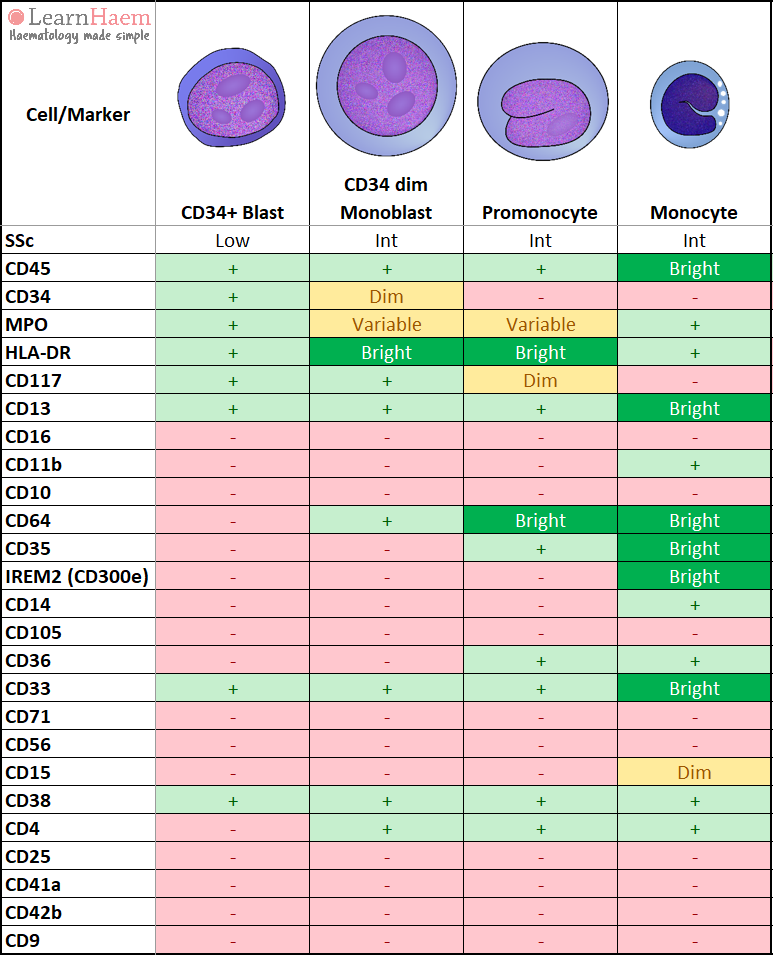
Maturation Pathways
Side Scatter and CD45
As monoblasts mature into monocytes, they increase in side scatter, and become brighter for CD45.
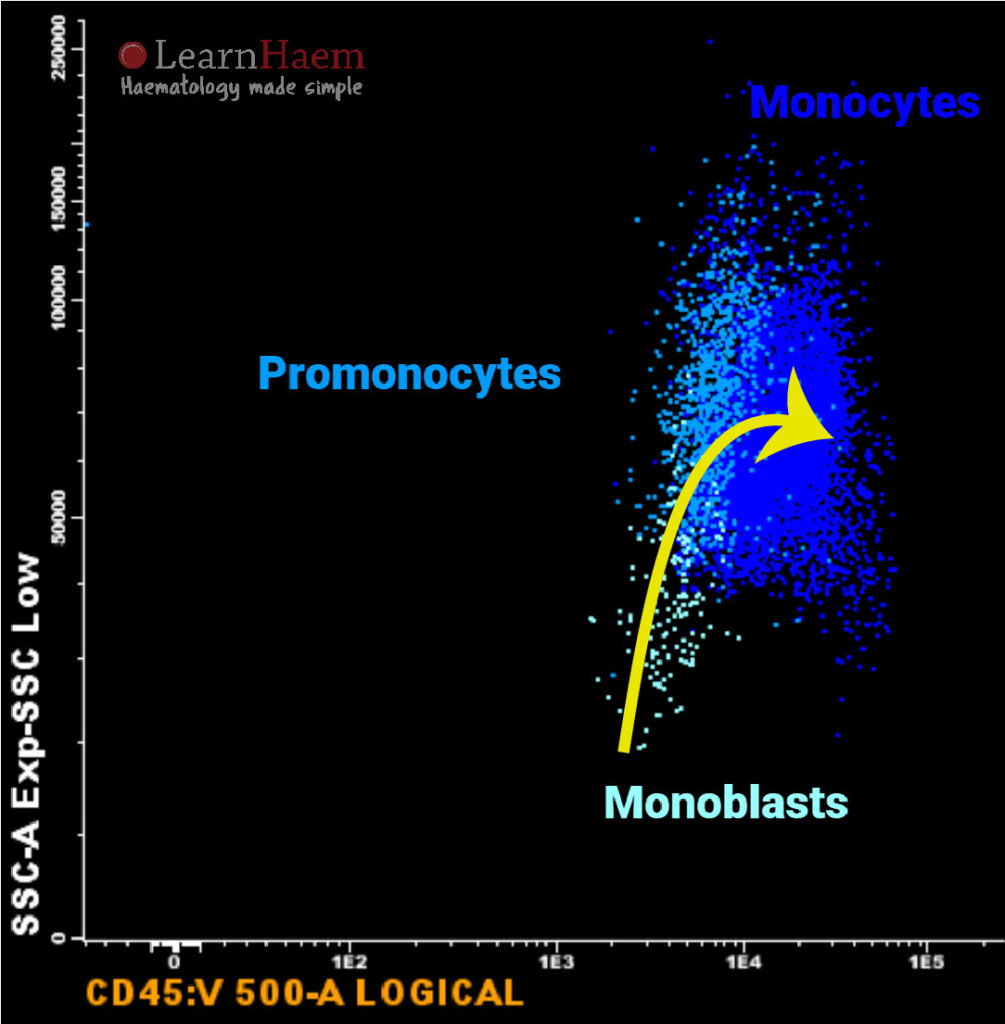
Side Scatter and CD34
Monoblasts are CD34 dim or negative (in contrast to myeloblasts, which are CD34+). As they mature into promonocytes, they lose CD34 and increase in side scatter.
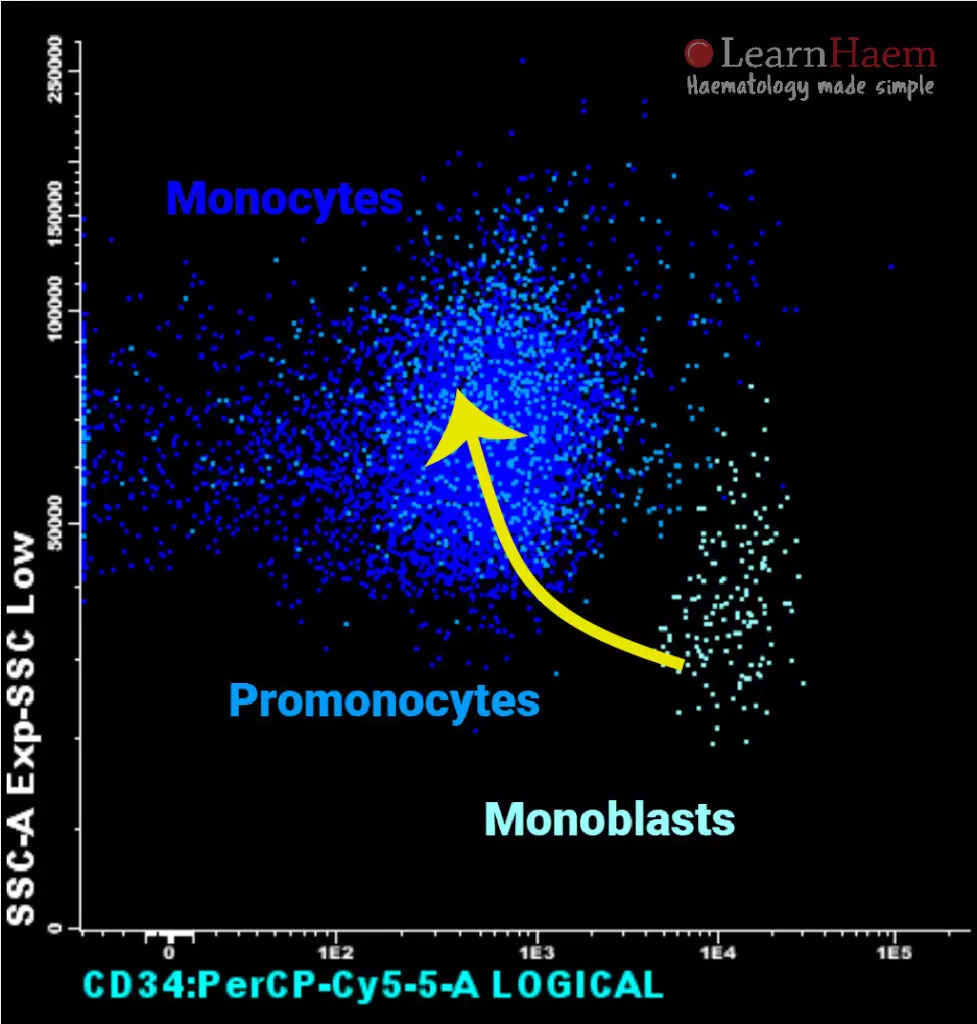
CD117 and HLA-DR
Monoblasts and promonocytes are HLDA-DR bright. As monoblasts mature into promonocytes, they lose CD117. As promonocytes mature into monocytes, the HLA-DR becomes less bright (but HLA-DR on mature monocytes is still positive compared to mature granulocytes).
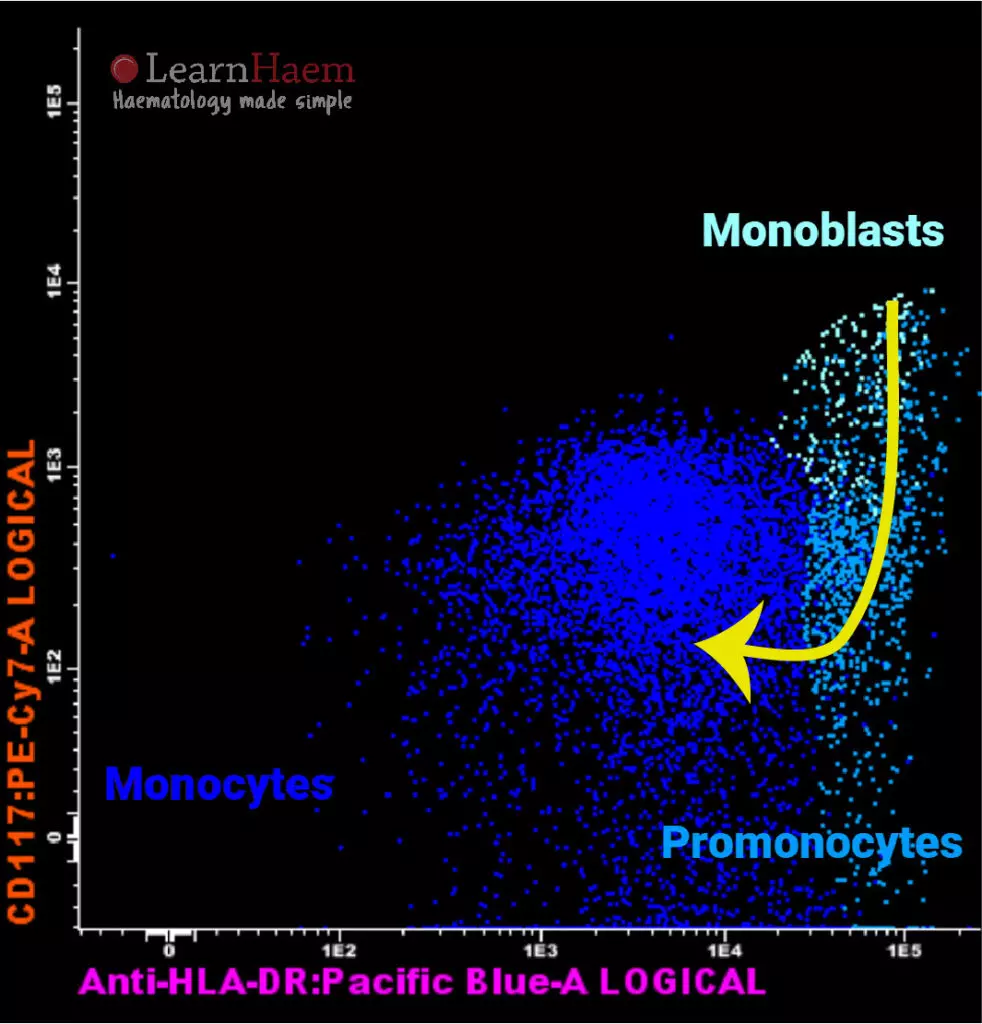
CD64 and CD14
Monocytes at all maturation stages express CD64. Monoblasts are CD64 dim, with expression reaching normal levels as they mature into promonocytes. Monoblasts and promonocytes are negative for CD14. As they mature into monocytes, they gain CD14.
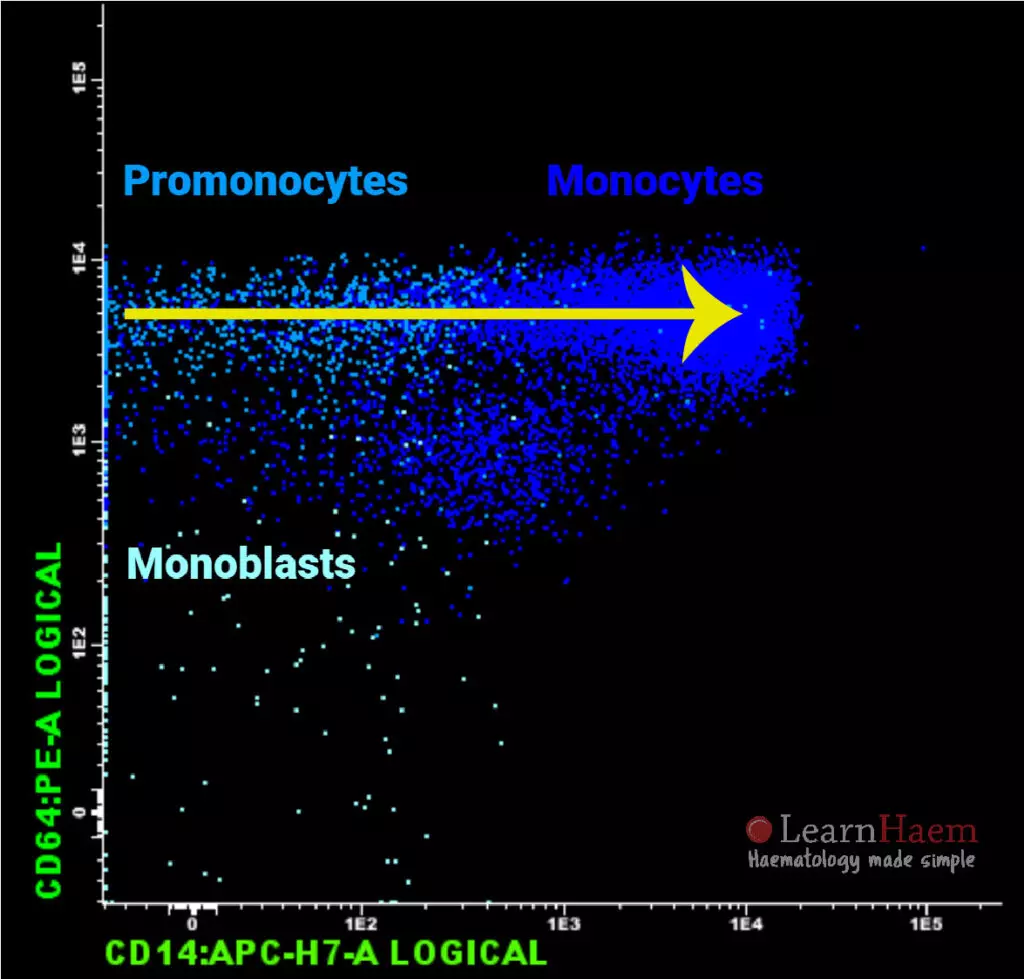
CD14 and CD35
Monoblasts are negative for CD14 and CD35. As they mature into monocytes, they express both CD14 and CD35.
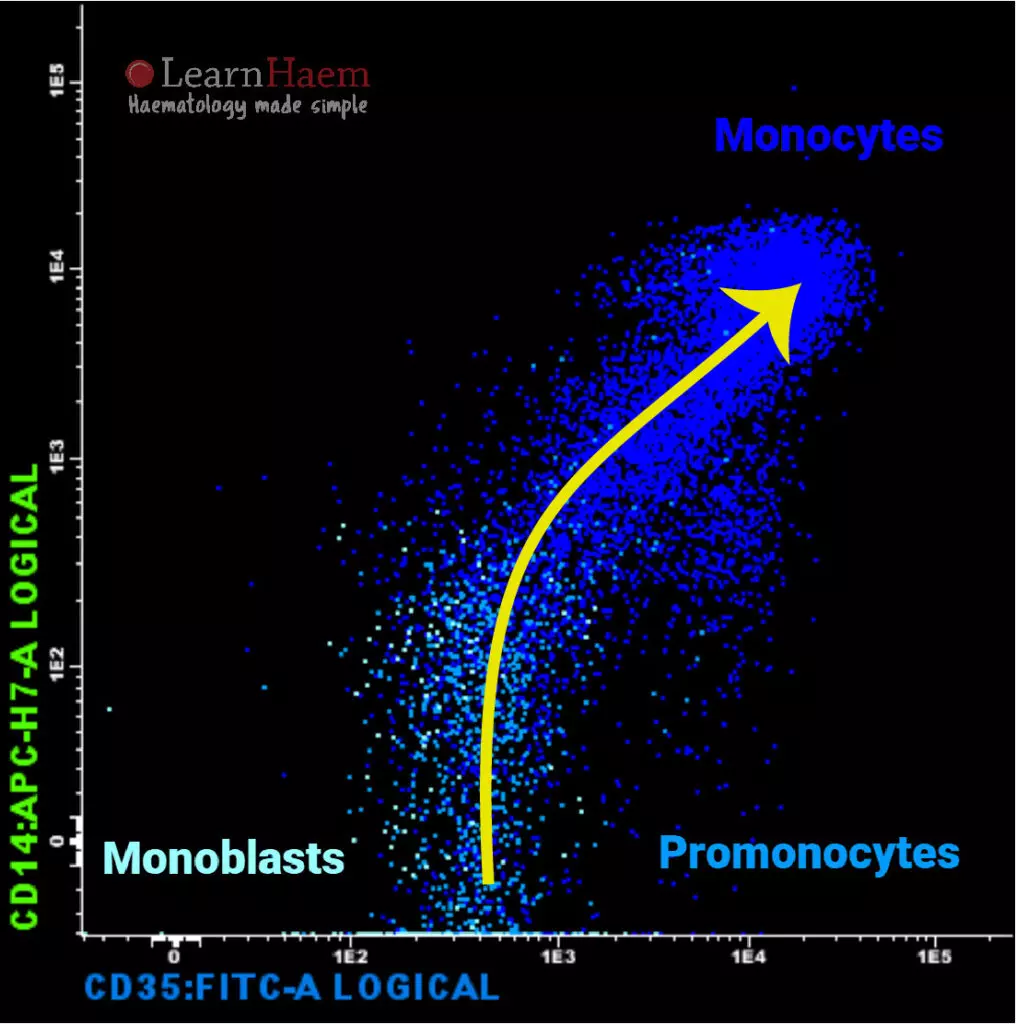
IREM2 (CD300e) and CD14
Monoblasts and promonocytes are negative for IREM2 and CD14. As they mature into monocytes, they express both IREM2 and CD14. IREM2 expression occurs later, after CD14 is highly expressed.
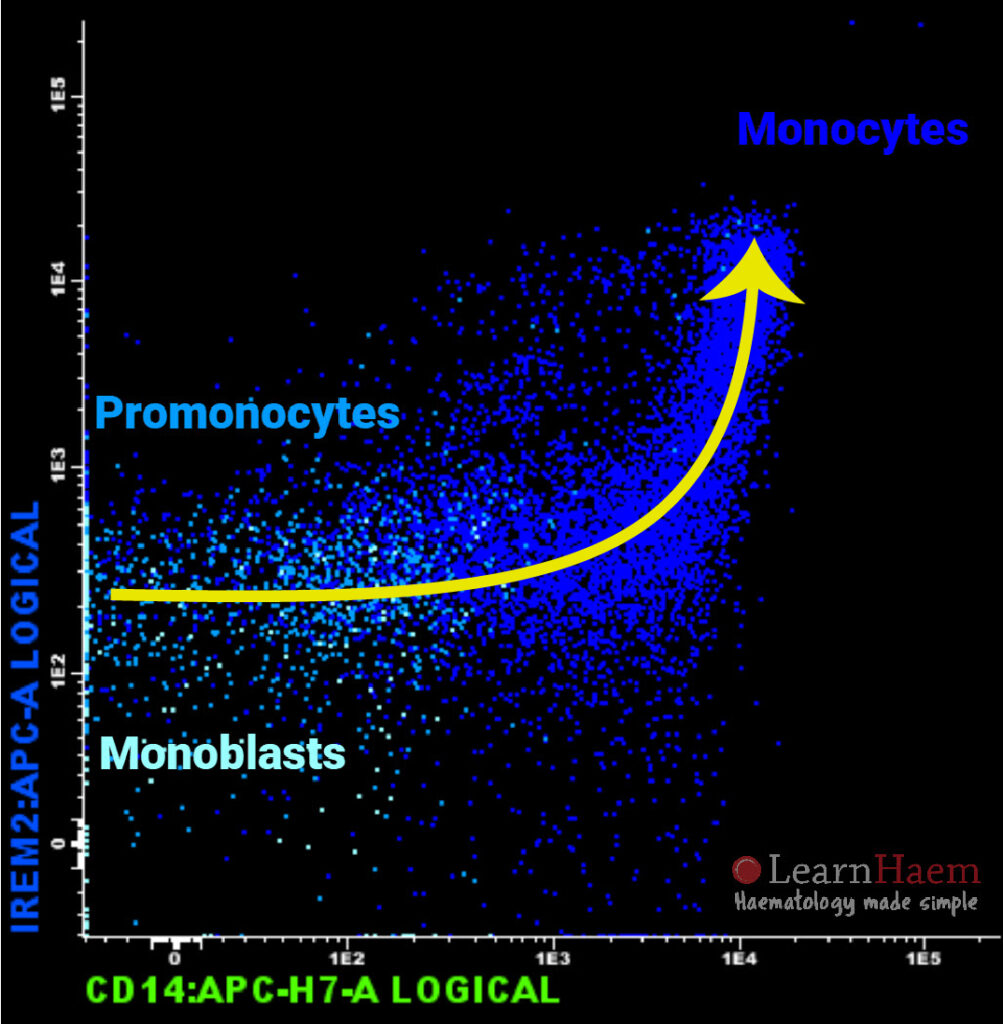

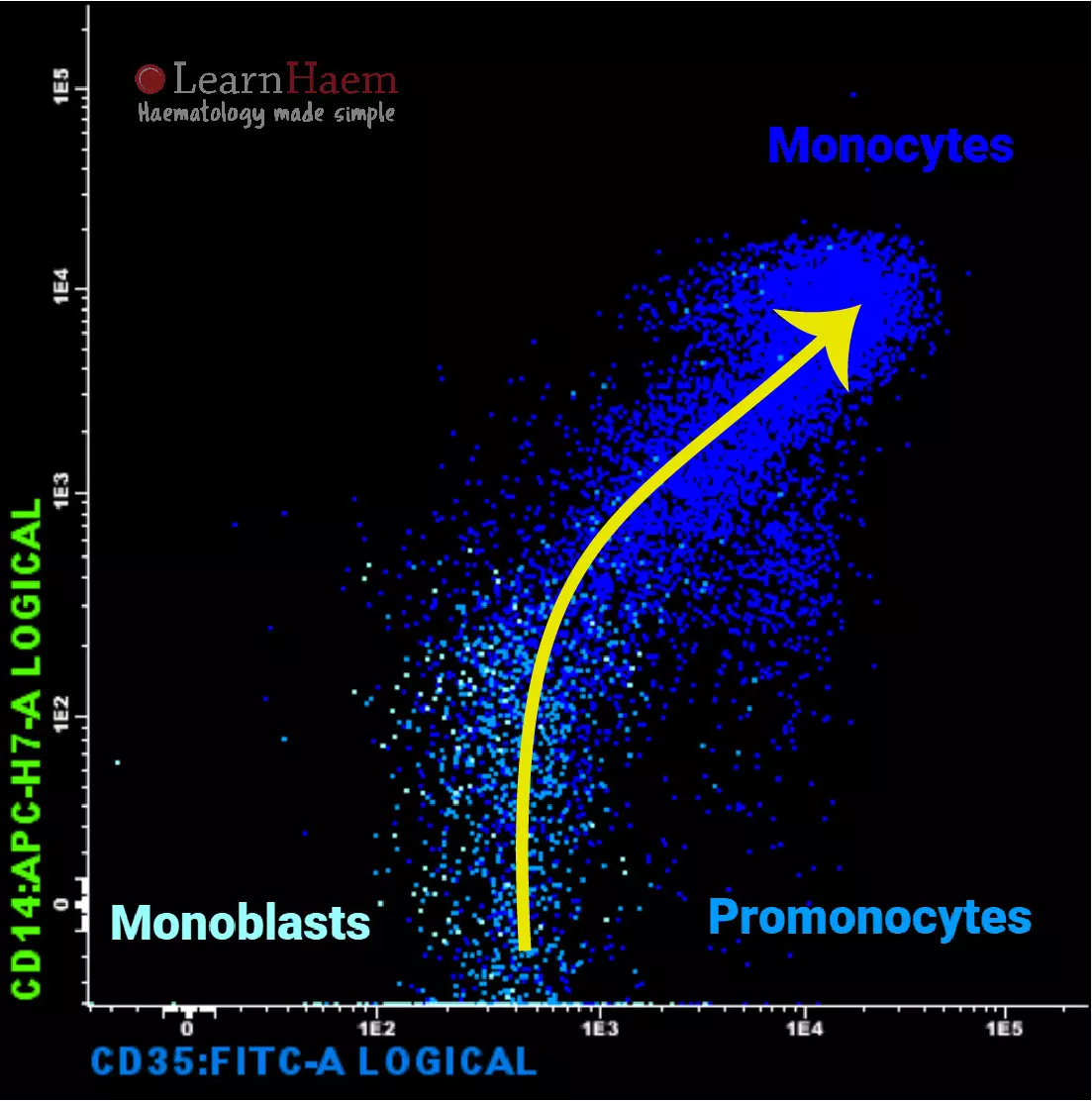
Leave A Comment